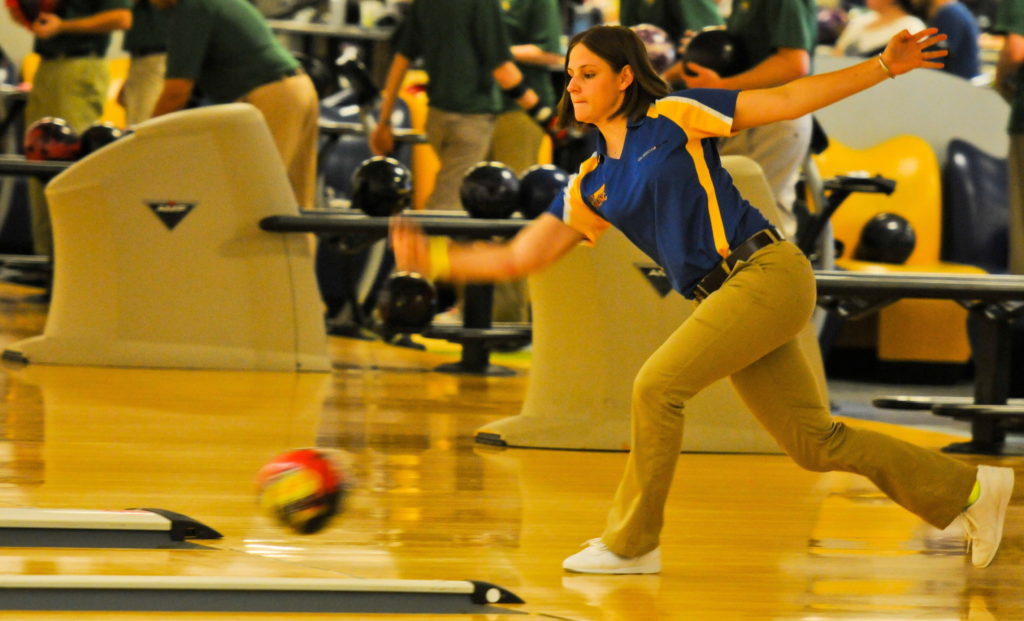
When you’re starting to take the next step in bowling and progressing beyond bowling tips for beginners, understanding lane conditions and oil patterns is one area of the game that becomes paramount.
(If you’re not familiar with the typical house oil pattern, we recommend reading that article first before coming back here.)
Why Do Lane Oil Conditions Change?
In an ideal world, bowling lane conditions would stay the same so that once you find the right target that leads your shot into the pocket, you could simply stay with that and rack up strike after strike.
But in reality, conditions change over the course of play, so you need to understand these processes so you’ll know how to make adjustments. In fact, every time a ball travels down the lane, conditions change slightly.
“Lane transition” is the technical term for this, defined as “incremental changes in a lane’s frictional characteristics along a path that has experienced repeated ball traversals so as to change the oil pattern and its effect on subsequently-rolled balls.”
Explaining Carrydown and Breakdown
Oil carry-down and breakdown are the two main ways that lane conditions change over time.
Carry-down means what it sounds like: it’s when your ball picks up oil and carries it down to a previously dry part of the lane, usually the back end which refers to the third of the lane furthest from the foul line. This causes your ball to slide and experience increased length before hooking.
Breakdown occurs when oil sticks to your ball’s coverstock when going through wet spots, leaving certain boards drier than when the oil was applied.
And as more and more shots travel through the same areas, this oil separation leads to more of a break down and less lubrication on the surface. This results in increased friction and thus reduced length.
Role of Coverstocks in Lane Transition
Part of these phenomena is due to advances in bowling ball materials; specifically that in the late 1980s new balls with aggressive coverstocks were developed.
This increased the amount of oil that needed to be applied to the lanes, and thus the ways in which it breaks down and carries changed significantly.
How to Adjust to Oil Transition
So what can you do about these invisible but significant forces that threaten to throw off your carefully planned shots? As you can guess, it’s easy for you to miss your target if your ball is hooking earlier or later than expected.
There are a few adjustments you can make to deal with breakdown and carry-down. Some bowlers carry an extra ball with a coverstock well suited to the type of transition that they most regularly encounter.
If you stick with the same ball, you may try switching up your ball speed, release technique (such as rev rate or axis tilt), or adjusting your starting position or target in order to take a different line to the pocket.
If the lane is breaking down, for example, and your ball starts to hook too soon, then you’ll want to make an adjustment so that your ball path takes an angle into a section of the lane with a heavier concentration of oil so that it once again gets the right amount of skid.
This can be a challenging subject for beginning bowlers, so the most important habit to develop is being observant as to how oil transition is affecting your shots.
As you gain more bowling experience, you start to see how your shots change over the course of many frames, and also learn how to be sure that it’s lane conditions and not just a poor shot or missed target, which might lead to a similar result.
At that point you can better make the correct adjustments.


Leave a Reply